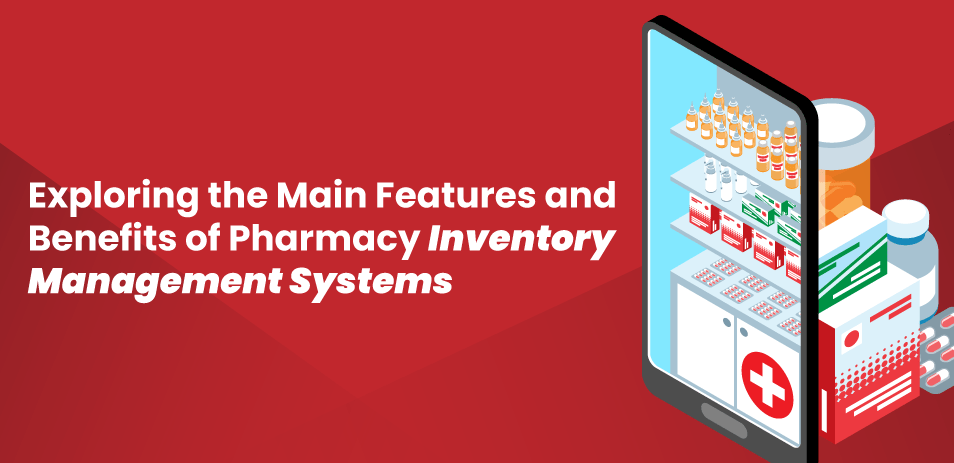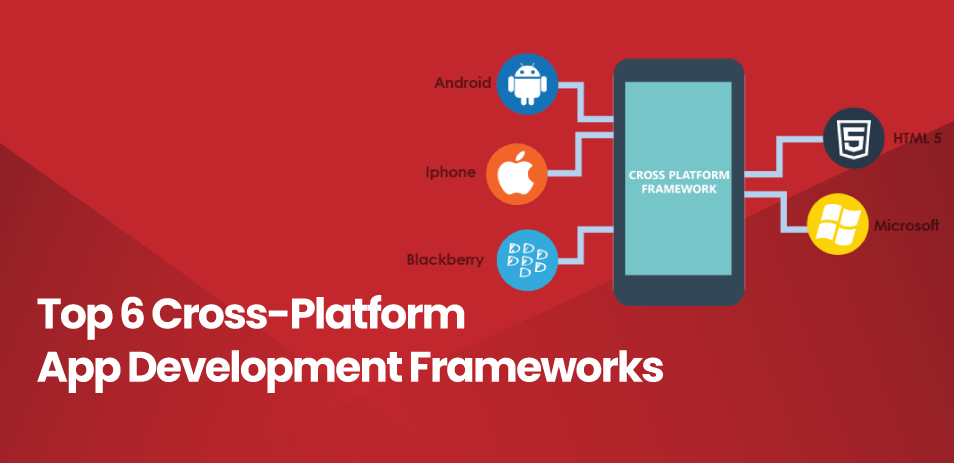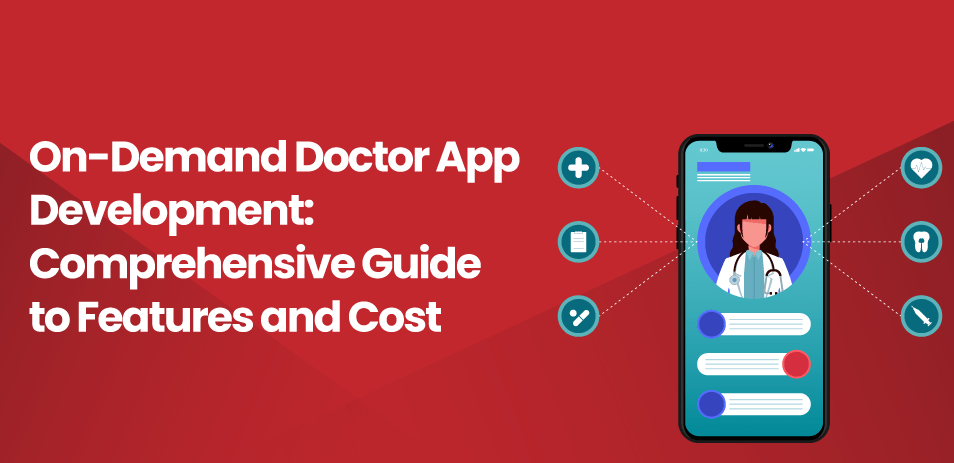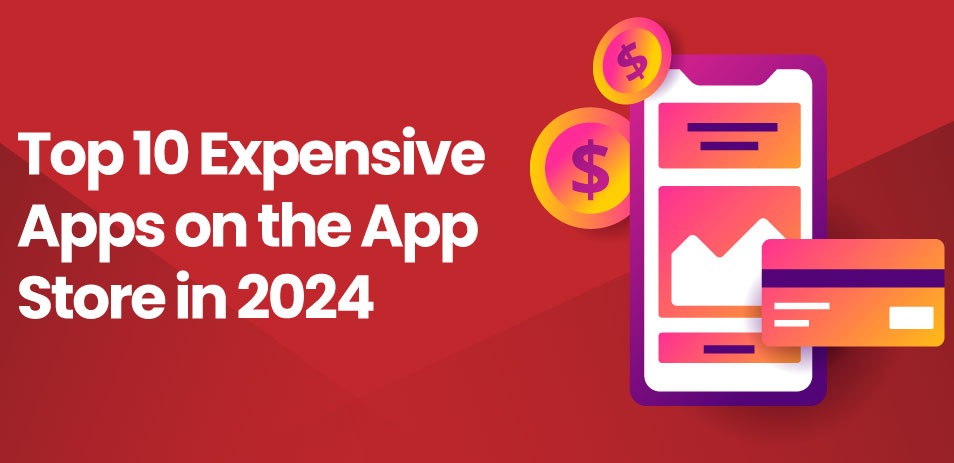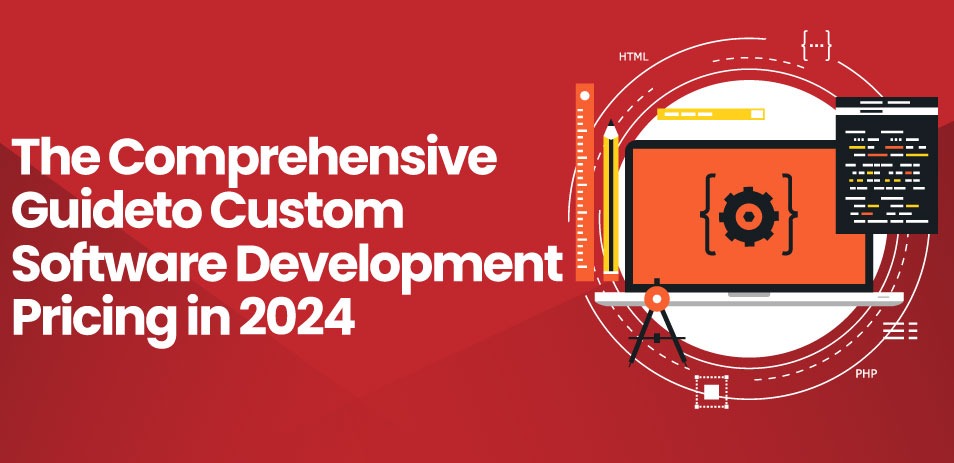The pharmaceutical industry is tasked with the crucial responsibility of providing life-saving medications and healthcare products to individuals worldwide. From manufacturers to distributors, pharmacies to hospitals, every entity within this sector operates within a complex ecosystem where inventory management plays a pivotal role.
Efficient inventory management is not merely a matter of convenience; it’s a fundamental necessity. Timely availability of medications, accurate tracking of stock levels, and compliance with regulatory standards are essential for maintaining the integrity of pharmaceutical operations while ensuring patient safety.
In response to these challenges, Pharmacy Inventory Management System Software (PIMS) has emerged as an indispensable tool for modern pharmacies. These systems combine advanced technology with pharmaceutical expertise to streamline inventory processes, optimize stock levels, and enhance overall operational efficiency. As we delve deeper into the world of PIMS, let’s explore its main features and the myriad benefits they bring to the pharmaceutical landscape. If you’re searching for a mobile app development company near me that specializes in PIMS solutions, you’re in the right place.
What is Pharmacy Inventory Management Systems?
Pharmacy Inventory Management Systems (PIMS) are software solutions designed specifically for the unique needs of pharmacies and healthcare facilities. Their primary purpose is to facilitate the efficient management of pharmaceutical inventory, ensuring timely availability of medications while minimizing waste and maximizing profitability. The global Pharmacy Management System market size was valued at USD 5237.56 million in 2021 and is expected to expand at a CAGR of 11.63% during the forecast period, reaching USD 10136.11 million by 2027.
| Type of PIMS | Description |
| Cloud-based | Operates on remote servers accessed via the internet. Offers scalability, flexibility, and accessibility from any location. |
| On-premise | Installed and operated locally on pharmacy servers. Provides greater control over data but requires significant upfront investment. |
| Standalone | Dedicated inventory management solutions. |
| Integrated | Part of broader pharmacy management software suites. Includes additional functionalities such as prescription processing and patient management. |
Ready to optimize your pharmacy operations with a custom Pharmacy Inventory Management System?
Contact us now to hire expert developers and revolutionize your inventory management!
Yes Let’s goMain Features of Pharmacy Inventory Management Systems
Pharmacy Inventory Management Systems (PIMS) are sophisticated software solutions tailored specifically to the unique needs of pharmacies and healthcare facilities. These systems offer a comprehensive array of features designed to streamline inventory processes, optimize stock levels, and enhance overall operational efficiency. Let’s delve into the main features of PIMS in detail:
A. Inventory Tracking:
Efficient inventory tracking lies at the core of PIMS functionality. These systems provide real-time monitoring of inventory levels, allowing pharmacies to maintain accurate records of stock on hand. Advanced barcode scanning technology enables rapid and precise tracking of individual items, ensuring inventory accuracy and minimizing errors.
Key aspects of inventory tracking include:
- Real-time inventory monitoring: PIMS offers up-to-date visibility into inventory levels, enabling pharmacists to identify stock shortages or excesses quickly.
- Barcode scanning technology: Barcode scanners are integrated with PIMS to scan product barcodes, facilitating fast and accurate data entry and reducing manual errors.
- Batch and lot tracking: PIMS enables pharmacies to track medications by batch or lot number, facilitating product recalls and ensuring compliance with regulatory requirements.
Also Recommended: A Complete Guide For Healthcare App Development In 2024
B. Automated Ordering and Restocking:
PIMS streamlines the ordering and restocking process, automating routine tasks and minimizing manual intervention. By setting par levels and reorder points, these systems ensure that pharmacies maintain optimal stock levels to meet customer demand while avoiding overstocking or stockouts.
Key features of automated ordering and restocking include:
- Set par levels and reorder points: Pharmacies can define minimum and maximum stock levels for each product, triggering automatic reorder when inventory falls below predetermined thresholds.
- Automatic purchase order generation: PIMS generates purchase orders automatically based on predefined reorder parameters, reducing the need for manual order entry and streamlining procurement processes.
- Supplier integration: PIMS integrates with suppliers’ systems, enabling seamless electronic transmission of purchase orders and facilitating efficient communication between pharmacies and suppliers.
C. Expiry Date Monitoring:
Ensuring the integrity and safety of pharmaceutical products is paramount for pharmacies. PIMS includes robust features for monitoring expiration dates and managing product shelf life, helping pharmacies prevent the dispensing of expired medications and minimize wastage.
Key aspects of expiry date monitoring include:
- Alert systems for expiring medications: PIMS issues automated alerts to pharmacists when medications are approaching their expiration dates, enabling timely action to prevent the dispensing of expired products.
- FIFO (First In, First Out) inventory management: PIMS supports FIFO inventory management practices, ensuring that older inventory is dispensed before newer stock to minimize the risk of product expiry.
- Preventing expired medications from reaching customers: By tracking expiration dates and implementing proactive measures, PIMS helps pharmacies avoid dispensing expired medicines to patients, safeguarding patient health and reducing financial losses.
D. Integration with Point-of-Sale Systems:
Seamless integration with point-of-sale (POS) systems is a key feature of modern PIMS, enabling pharmacies to synchronize sales data with inventory levels in real time. This integration enhances operational efficiency, improves customer service, and minimizes errors in inventory management.
Key features of integration with POS systems include:
- Syncing sales data with inventory levels: PIMS automatically updates inventory levels based on sales transactions processed through POS systems, ensuring accurate and up-to-date inventory records.
- Real-time updates on product availability: Pharmacies can provide customers with real-time information on product availability, reducing wait times and improving customer satisfaction.
- Preventing stockouts and overstock situations: By maintaining synchronized inventory levels with POS systems, PIMS helps pharmacies avoid stockouts by ensuring that popular medications are always in stock while also preventing overstock situations by accurately tracking sales data and demand patterns.
E. Reporting and Analytics:
PIMS offers robust reporting and analytics capabilities, empowering pharmacies to gain valuable insights into their inventory management processes and make data-driven decisions to optimize operations and improve profitability.
Key features of reporting and analytics include:
- Generating comprehensive reports on sales and inventory: PIMS generates a variety of reports, including sales reports, inventory turnover reports, and stock status reports, providing pharmacies with valuable insights into their business performance.
- Identifying trends and forecasting demand: Advanced analytics tools built into PIMS analyze historical sales data and identify trends, enabling pharmacies to forecast demand accurately and adjust inventory levels accordingly.
- Data-driven decision-making for better inventory management: By leveraging the insights provided by reporting and analytics features, pharmacies can make informed decisions about inventory replenishment, pricing strategies, and product assortment, maximizing profitability and efficiency.
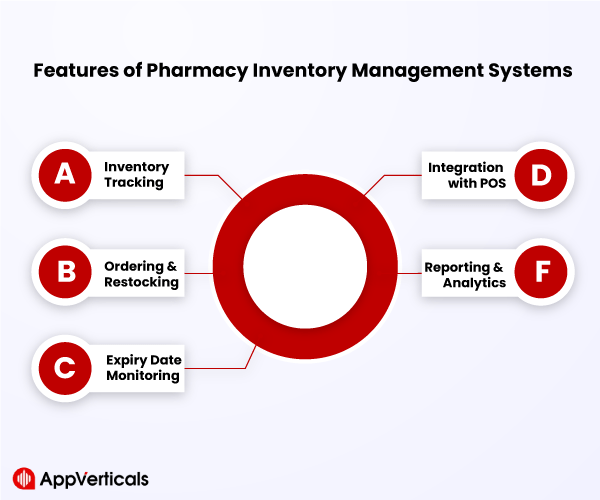
Benefits of Pharmacy Inventory Management Systems
Implementing inventory management for pharmacies offers numerous benefits to pharmacies and healthcare facilities, ranging from improved efficiency and accuracy to cost savings and enhanced customer service. Let’s explore these benefits in detail:
A. Improved Efficiency and Accuracy:
- Minimize Manual Errors: PIMS automates inventory tracking and ordering processes, reducing the reliance on manual data entry and minimizing errors associated with manual record-keeping.
- Streamline Operations: By centralizing inventory management tasks and providing real-time visibility into stock levels, PIMS streamlines pharmacy operations and reduces the time and effort required for inventory management.
- Enhance Workflow: PIMS optimizes workflow by automating routine tasks such as order generation and inventory reconciliation, allowing pharmacy staff to focus on providing quality patient care.
B. Cost Savings:
- Prevent Overstocking and Wastage: PIMS helps pharmacies maintain optimal stock levels by setting reorder points, preventing overstocking, and minimizing wastage due to expired or obsolete medications.
- Avoid Stockouts: By monitoring inventory levels in real-time and automating reorder processes, PIMS helps pharmacies avoid stockouts and lost sales, maximizing revenue potential.
- Optimize Inventory Levels: PIMS provides valuable insights into inventory turnover rates and demand patterns, enabling pharmacies to optimize inventory levels and reduce carrying costs associated with excess inventory.
C. Regulatory Compliance:
- Ensure Safety and Quality: PIMS includes features for monitoring expiration dates and managing product shelf life, ensuring compliance with regulatory requirements, and safeguarding patient health.
- Track Controlled Substances: PIMS provides robust tracking and reporting capabilities for controlled substances, helping pharmacies maintain compliance with regulatory standards and prevent diversion or misuse.
D. Enhanced Customer Service:
- Always in Stock: By maintaining accurate inventory records and automating reorder processes, PIMS ensures that pharmacies have essential medications in stock, reducing wait times for customers and enhancing overall customer satisfaction.
- Reduce Wait Times: PIMS enables pharmacies to provide real-time updates on product availability to customers, reducing wait times and improving the overall pharmacy experience.
- Improve Communication: By integrating with point-of-sale systems and providing real-time updates on product availability, PIMS improves communication between pharmacy staff and customers, fostering better relationships and loyalty.
E. Business Growth and Expansion:
- Scalability: PIMS are scalable solutions that can adapt to the changing needs of pharmacies, accommodating growth and expansion without the need for significant infrastructure investments.
- Streamlined Operations: By streamlining inventory management processes and enhancing operational efficiency, PIMS provides pharmacies with a competitive edge in the market, enabling them to grow and expand their business.
- Competitive Advantage: Pharmacies that leverage PIMS benefit from improved inventory management practices, better customer service, and cost savings, giving them a competitive advantage in the industry.
Challenges and Considerations
Implementing a Pharmacy Inventory Management System Software (PIMS) comes with its own set of challenges and considerations that pharmacies need to address to ensure successful adoption and utilization. Here are five key challenges and considerations:
Initial Setup and Implementation Costs:
- Challenge: The initial setup and implementation of a PIMS can incur significant costs, including software licensing fees, hardware purchases, and implementation services.
- Consideration: Pharmacies need to carefully budget for these costs and consider the return on investment (ROI) in terms of efficiency gains, cost savings, and improved customer service.
Training Staff for Effective Utilization:
- Challenge: Pharmacy staff may require training to effectively utilize the features and functionalities of the PIMS, including inventory tracking, order management, and reporting.
- Consideration: Pharmacies should invest in comprehensive training programs to ensure that staff are proficient in using the PIMS and understand its benefits for streamlining operations and improving efficiency.
Data Security and Privacy Concerns:
- Challenge: PIMS stores sensitive patient information and medication data, raising concerns about data security and privacy compliance, particularly in the context of healthcare regulations such as HIPAA.
- Consideration: Pharmacies need to implement robust security measures to safeguard data stored within the PIMS, including encryption, access controls, and regular security audits to ensure compliance with regulatory requirements.
Compatibility with Existing Systems and Infrastructure:
- Challenge: Integrating a PIMS with existing pharmacy management systems, electronic health records (EHRs), and other healthcare IT infrastructure can pose compatibility challenges.
- Consideration: Pharmacies should carefully evaluate the compatibility of the PIMS with their existing systems and infrastructure, considering factors such as data formats, communication protocols, and interoperability standards.
Maintenance and Ongoing Support:
- Challenge: PIMS require ongoing maintenance, updates, and technical support to ensure optimal performance and address issues that may arise over time.
- Consideration: Pharmacies should establish a plan for ongoing maintenance and support, including vendor agreements, service level agreements (SLAs), and internal processes for troubleshooting and resolving technical issues in a timely manner.
Future Trends in Pharmacy Inventory Management
A. Integration of Artificial Intelligence (AI) and Internet of Things (IoT):
Advancements in AI and IoT revolutionize pharmacy inventory management. AI algorithms analyze data to predict demand trends, optimizing inventory levels. IoT devices like sensors and RFID tags offer real-time tracking, ensuring precise medication inventory management. Integration of AI and IoT enhances efficiency, minimizing wastage and streamlining operations.
B. Telemedicine Platform Integration:
Pharmacies increasingly integrate inventory systems with telemedicine platforms. This integration supports electronic prescribing, medication synchronization, and home delivery services for remote patients. By syncing with telemedicine platforms, pharmacies offer convenient medication management, improving patient access and adherence to treatment plans.
C. Customization and Personalization:
Medication Inventory Management Systems (PIMS) are evolving to offer more customization options. Pharmacies can tailor workflows, reporting formats, and inventory alerts to their specific operational needs and patient demographics. This customization enhances efficiency by adapting inventory management processes to individual pharmacy requirements, ultimately improving patient satisfaction and service quality.
D. Regulatory Compliance and Adaptation:
As pharmaceutical regulations evolve, PIMS must adapt to ensure compliance. Systems need to meet requirements such as track-and-trace mandates and serialization standards. Pharmacies must implement robust data security measures and drug pedigree tracking to minimize regulatory risks and maintain adherence to evolving compliance standards.
E. Data Analytics and Predictive Modeling:
PIMS will increasingly leverage data analytics and predictive modeling capabilities. By analyzing historical data and trends, pharmacies can forecast demand more accurately, optimizing inventory levels and reducing wastage. Predictive modeling enables proactive decision-making, ensuring pharmacies can meet patient needs efficiently while minimizing costs and maximizing profitability.
Transform your pharmacy’s inventory management with our skilled developers.
Let’s streamline your operations and enhance efficiency together. Get in touch today!
Yes Let’s goConclusion
Inventory management for pharmacy stands as indispensable tool in the ever-evolving landscape of pharmaceutical operations. From streamlining inventory processes to optimizing stock levels and enhancing overall efficiency, the benefits of PIMS are undeniable. As pharmacies embrace future trends such as AI and IoT integration, telemedicine platform integration, customization and personalization, regulatory compliance, and data analytics, the potential for further advancements in inventory management is vast.
Looking ahead, the collaboration between pharmacies and healthcare mobile app development companies will play a pivotal role in shaping the future of PIMS. By leveraging the expertise of healthcare mobile app development companies, pharmacies can innovate and integrate PIMS with cutting-edge technologies, ensuring seamless connectivity, user-friendly interfaces, and robust security measures.
The adoption of PIMS not only improves operational efficiency and reduces costs but also enhances patient care delivery and satisfaction. As pharmacies continue to navigate the complexities of the pharmaceutical industry, investing in advanced PIMS solutions and collaborating with healthcare on-demand mobile app development companies will be key to staying ahead of the curve and achieving long-term success in the dynamic healthcare landscape.

